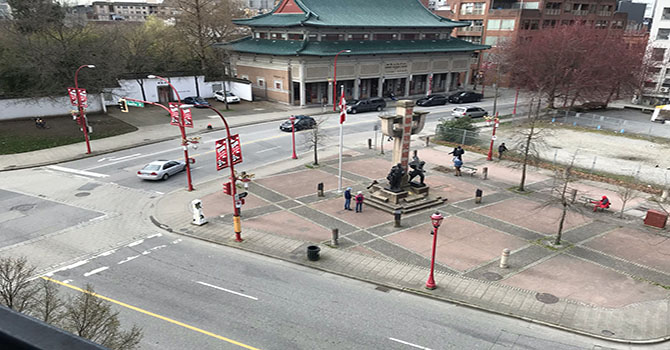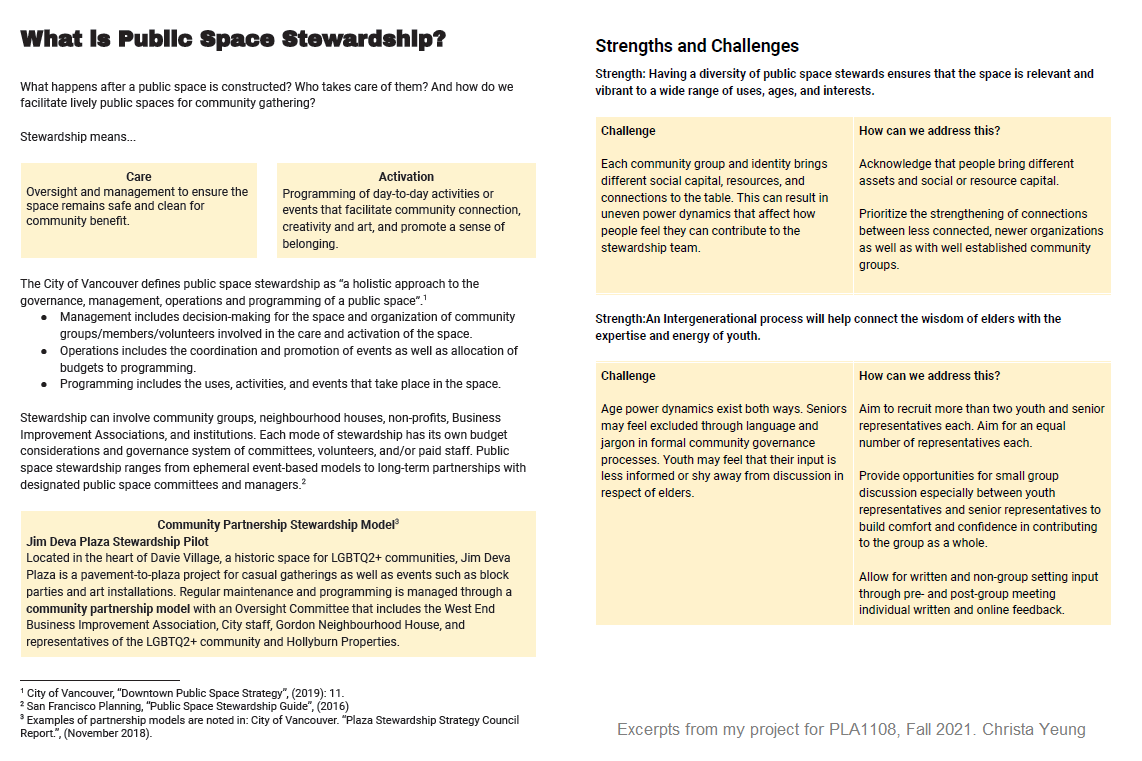Community engagement is an integral ingredient in planning decision-making. Furthermore, all communities are storied: their expectations, actions, and responses to planning decisions are informed by past successes, failures, and traumas that reverberate well beyond a single project that planners may be engaged in. It's important to listen and reflect on these stories, relationships, and power dynamics as they help inform approaches to more meaningful engagement and modes of communication.
Engagement Strategy: A Public Space Stewardship Strategy for Chinatown Memorial Plaza, Vancouver
These ideas about community engagement were all central themes that I explored in my first year Master of Science in Planning class: "Communication in the Face of Power". For my final project, I was tasked to create a community engagement strategy and design a communication output for a hypothetical project.
As the Chinatown Memorial Plaza in Vancouver is undergoing a redesign process, I decided to focus my project on the recruitment and creation of a hypothetical public space stewardship group that would maintain the space well after its redesign.
In doing so, I explored ideas such as:
- How to define and identify community actors that we engage with?
- What goals and parameters are expected and communicated for engagement? What decisions are on the table for discussion with community members?
- How will time and staff resources be allocated for the engagement process?
- What tools and techniques of communication and engagement will be most appropriate for this specific community?
- What is the timeline of community engagement? What are the outcomes?
- How can planners be reflexive to issues of anti-oppression and responsive to power imbalances between planners and the communities they work with?
Below are two excerpts from my engagement plan, outlining the context of public space stewardship and the strengths and challenges of organizing a public space stewardship group.
Recruitment Poster: Enhancing Accessibility and reducing choice-friction

In addition to creating a community engagement strategy, I was also tasked to create a creative communication output addressed to the community. Here, I have illustrated a poster print-out on Adobe Illustrator that would be used to recruit senior community members to join the public space stewardship group.
In designing the poster, I focused on making it:
Informative: All the who/what/where/when details are clearly stated.
Actionable: The poster doubles as a recruitment form that can be cut and mailed.
I wanted to reduce the choice friction it took to participate in community engagement. Scanning a QR code or visiting a shortened link is an unrealistic expectation for seniors who have less access and knowledge of computers. Including the mailing address allows seniors to mail the form through the post office or drop it off directly at the address of the office.
Accessible: Defined as both language-accessible, culturally-accessible, and accessible to people with disabilities.
While I couldn't translate the poster into different languages due to the scope of the course, I focused on aspects of accessible print design such as:
- Grid and hierarchy of information
- Size of text
- Negative space balance in font choices
- Colour: hue and brightness are utilized to enhance readability for people with colour blindness.
The Association of Registered Graphic Designers of Ontario has a fantastic, free handbook on accessible design that can be found here.



